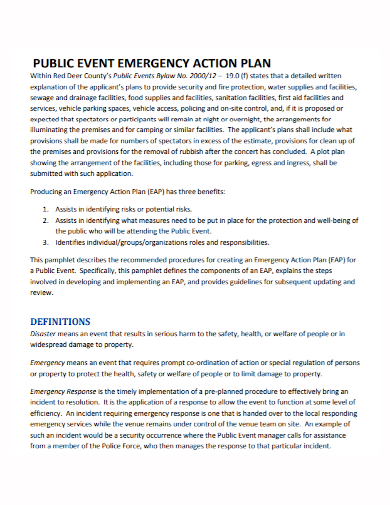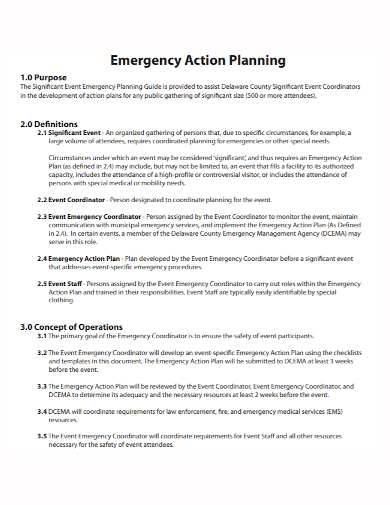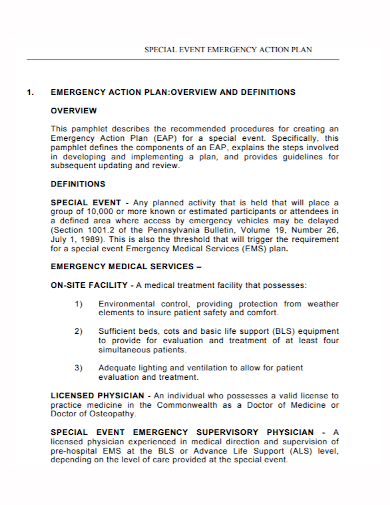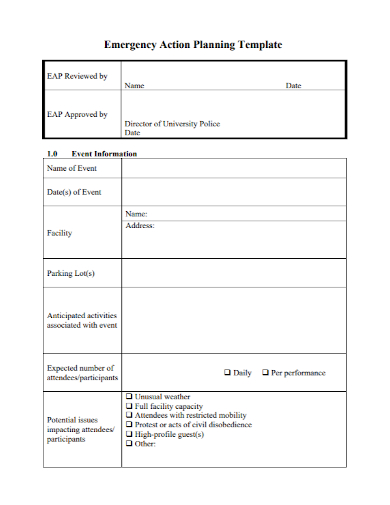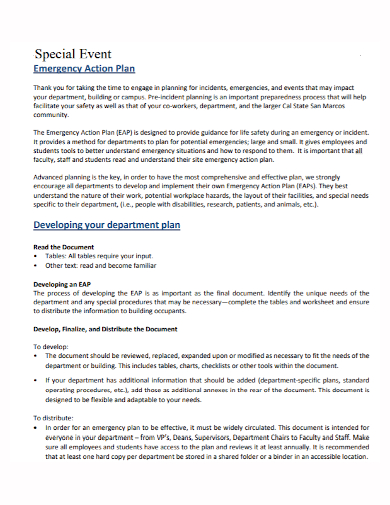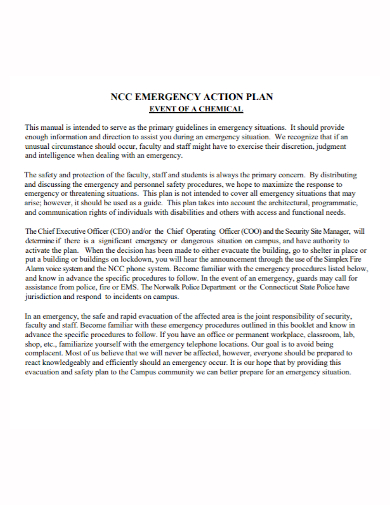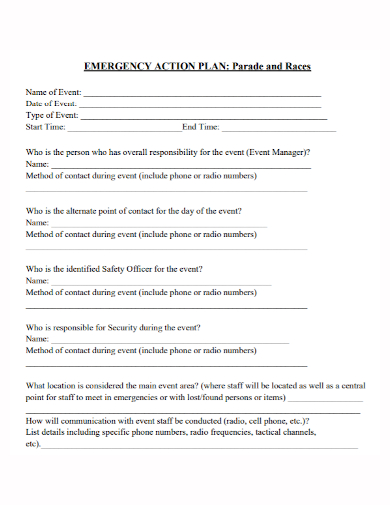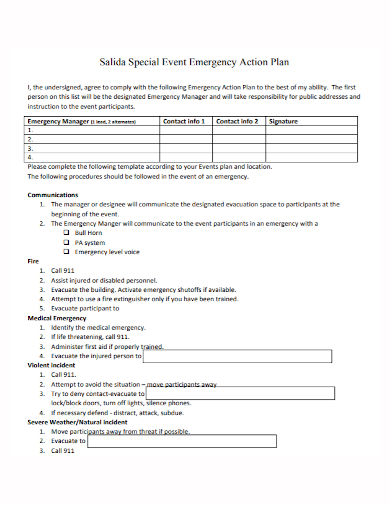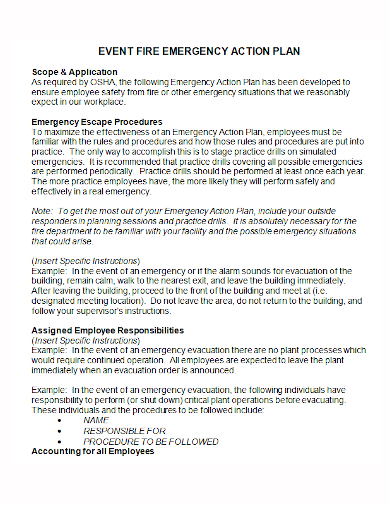Emergencies can occur at any moment and in any location. Emergencies come in a variety of shapes and sizes, but they always have one thing in common: you can’t anticipate when one will happen. There is no higher duty for a meeting or event organizer than protecting the health and safety of its participants. Event planners must be prepared to respond to a variety of situations, including weather changes, medical problems, and acts of violence. Because of the urgency of the circumstance, event workers may make rash decisions and bad choices. Putting in place an event emergency plan and educating your team should result in better outcomes and a safer workplace for everyone. As the event manager, you need to make sure that you have a great contingency plan in hand in case of anything unfortunate that would happen. You’ve come to the right place! In this article, we provide you with free and ready-to-use samples of Event Emergency Action Plans in PDF and DOC formats that you could use for your future events. Keep on reading to find out more!
10+ Event Emergency Action Plan Samples
1. Event Emergency Action Plan Template
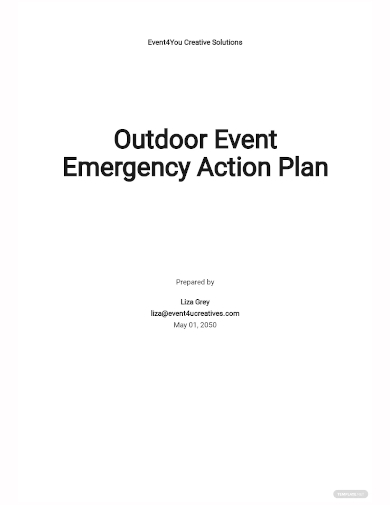
2. Event Emergency Action Plan
3. Event Staff Emergency Action Plan
4. Special Event Emergency Action Plan
5. Event Emergency Management Action Plan
6. Sample Event Emergency Action Plan
7. Standard Event Emergency Action Plan
8. Basic Event Emergency Action Plan
9. Printable Event Emergency Action Plan
10. Formal Event Emergency Action Plan
11. Event Fire Emergency Action Plan
What Is an Event Emergency Action Plan?
An emergency plan for an event is a strategy for dealing with a number of situations. The plan should start off broad – such as where emergency exits are located, how to call emergency personnel, and so on – before narrowing down to specifics like what to do if someone has a heart attack, what to do if there is a fire, and so on. Include essential internal personnel, venue management, and your security team in the planning process when putting together a strategy for your unique event.
It is a formal, written plan established by the event organizers that identifies potential emergency situations at the event site and specifies actions to follow in order to reduce risk and prevent loss of life and property.
How to Make an Event Emergency Action Plan?
Creating an emergency action plan for an event has another advantage. The procedure frequently discloses previously undetected safety flaws, such as a lack of equipment, funding, or training. Proper preparation can assist you in resolving these difficulties before they worsen an emergency. An Event Emergency Action Plan template can help provide you with the framework that you need in order to ensure that you have a robust and well-structured action plan in hand that covers all aspects. For that, you can choose one of our excellent templates listed above to help you out. If you want to write the plan yourself, follow these steps below to guide you:
1. Perform a risk analysis.
When establishing your event emergency plan, consider the possible dangers depending on the demographics of your attendees and the location. This is an assessment of the most probable emergencies to occur, based on criteria such as age, activity, geography, and so on. It can assist you in identifying your most critical hazards and determining how to reduce them. The principal dangers at an outdoor music festival, for example, will differ from those at an inside convention. As a result, creating a generic strategy for every event is impossible.
You should always be prepared for the worst-case situation, but the risk assessment will help you select the most likely ones.
2. Create an emergency response team.
Decisions must be made swiftly in an emergency. This means that everyone must be aware of the decision-makers’ identities and how to contact them when assistance is required. As a result, all employees, regardless of their job title, must be aware of their responsibilities in an emergency. Who is in charge of coordinating with emergency responders? Will there be a need for a media contact? Who is the security personnel’s main point of contact? Everyone should know their responsibilities, be prepared to act, and know how to contact other members of the team, supervisors, venue officials, and particular emergency responders.
3. Recruit security and medical professionals for the event.
The quantity of security required depends on the magnitude of the event. It could be sufficient to simply have security guards stationed at the entrance. Alternatively, you may require a guard at each door and staff to patrol the level. Similarly, it is usually a good idea to have medical personnel on staff. The greater the crowd, the more likely a medical emergency may occur. Having a skilled medical team on hand to give care will assist in keeping these potentially dangerous situations under control.
4. Perform a test run for your emergency response.
You’re unlikely to be able to gather your event personnel, recruit volunteers, and practice mock emergencies. However, you can invest some time during your event planning sessions going over several emergency scenarios.
Inquire about what they would do if someone fell and suffered a head injury, or if a fire broke out. Ascertain that they are aware of how to assist, who to contact, and where to go. Their responses will give you a decent picture of how prepared they are for an emergency. Your ability to minimize consequences grows as you and your crew feel more at ease – and the impact on your event might be life-saving.
FAQs
What is the primary goal of a disaster plan?
The basic goal of emergency planning is to keep people safe, protect the community, and keep businesses running. During a crisis, an emergency plan usually comprises necessary processes, a clear set of roles and duties, and specified instructions for local emergency response and recovery organizations.
What should be included in an emergency plan?
It must include protocols for reporting a fire or other emergency, at the very least. Floor plans or workplace maps that clearly illustrate the emergency escape routes, as well as protocols for emergency evacuation, including type of evacuation and exit route designations.
When an emergency scenario arises, you may only have a few moments to react, and the decisions you make can have a huge influence on both the event and the organization. It is vital to have a set of plans in place that will allow you to move quickly to reduce the effect. To help you get started, download our easily customizable and comprehensive samples of Event Emergency Action Plans today!
Related Posts
FREE 10+ Organization Action Plan Samples
FREE 10+ Sports Action Plan Samples
FREE 10+ Earthquake Action Plan Samples
FREE 10+ Construction Fire Safety Plan Samples
FREE 9+ Training Action Plan Samples
FREE 9+ Hotel Action Plan Samples
FREE 9+ Sample Affirmative Action Plan
FREE 9+ Contingency Plan Samples
FREE 8+ Sample Emergency Action Plan
FREE 13+ Crisis Management Plan Samples
FREE 12+ Sample School Action Plan
FREE 10+ After Action Plan Samples
FREE 10+ Sample Event Planning
FREE 10+ Production Action Plan Samples
FREE 6+ Incident Analysis Report Samples

